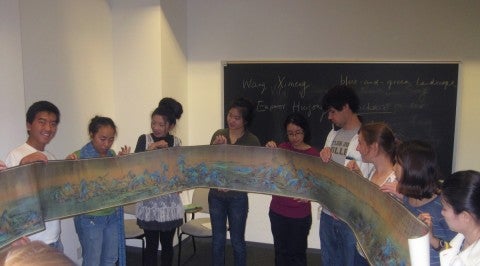“Confronting Animals Head-On: Zoocephalic Images in Medieval Ashkenaz”
Zoocephalic, or theriomorphic, images have long been recognized as a hallmark of Franco-German (that is, Ashkenazic) Jewish art, evident specifically in a series of manuscripts illuminated between the thirteenth and the fourteenth centuries. The raison d’être for this tradition, at least in theory, constitutes a creative take on the halakha, a corpus of Judaic law that forbids the representation of human countenance, as well as on the body of medieval responsa that took on this prohibition, often in surprisingly liberal ways. Because zoocephali constitute a pliant visual idiom operating outside established, traditional paradigms, their uses remain unfixed. Theriomorphs have been employed to great effect in medieval Hebrew books to test the limits of alterity, predicated on somatic entanglements between humanity and animality. This lecture explores several such entanglements in order to suggest that zoocephalic images stage a wide variety of complex visual arguments about likeness and difference.
-------
Elina Gertsman is Professor of Medieval Art and Archbishop Paul J. Hallinan Professor in Catholic Studies at Case Western Reserve University. Her research interests include issues of memory, perception, and multi-sensory reception; medium, play, and animation; medieval image theory; semiotics of media and polyfunctionality of objects; performance/performativity; late medieval macabre; materiality and somaticism; and medieval concepts of emotion and affectivity.
In addition to numerous articles, she has authored "The Dance of Death in the Middle Ages: Image, Text, Performance" (2010), which won the John Nicholas Brown Prize from the Medieval Academy of America for the best first book in medieval studies, as well as "Worlds Within: Opening the Medieval Shrine Madonna" (2015), the winner of the inaugural Karen Gould Prize in Art History from the Medieval Academy, awarded to a book in medieval art history, judged by the selection committee to be of outstanding quality. In 2018, she co-authored "The Middle Ages in 50 Objects" with Barbara H. Rosenwein. Prof. Gertsman’s most recent monograph is "The Absent Image: Lacunae in Medieval Books" (2021), the winner of the 2022 Charles Rufus Morey Prize, which honors an especially distinguished book in the history of art, published in the English language. She is the editor of "Visualizing Medieval Performance: Perspectives, Histories, Contexts" (2008), "Crying in the Middle Ages: Tears of History" (2011), “Animating Medieval Art” (2015), a guest-edited issue of the journal "Preternature," and "Abstraction and Medieval Art: Beyond the Ornament" (2021); and co-editor of "Thresholds of Medieval Visual Culture Liminal Spaces" (2012) and "Tributes in Honor of Richard K. Emmerson: Crossing Medieval Disciplines" (2021). With Stephen N. Fliegel, she published a catalogue that accompanied the focus exhibition they co-curated, “Myth and Mystique: Cleveland's Gothic Table Fountain” (2016). Her work has been supported by the Guggenheim, Kress, Mellon, and Franco-American Cultural Exchange Foundations as well as by the American Council for Learned Societies. In 2022 she was elected a Fellow of the Medieval Academy of America. In addition to the Festschrift in honor of Stephen Fliegel (for De Gruyter), she is working on several book-length projects: one on abstraction in medieval art (with Vincent Debiais), another on materiality of medieval medium, and another on theriomorphic imagery in Hebrew manuscripts.

